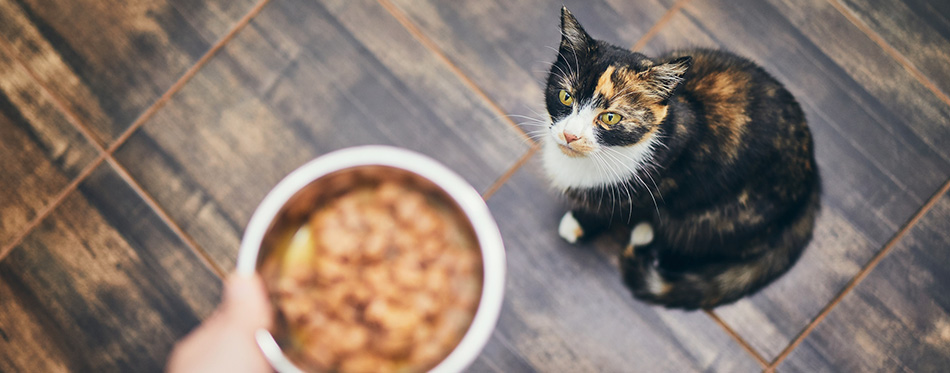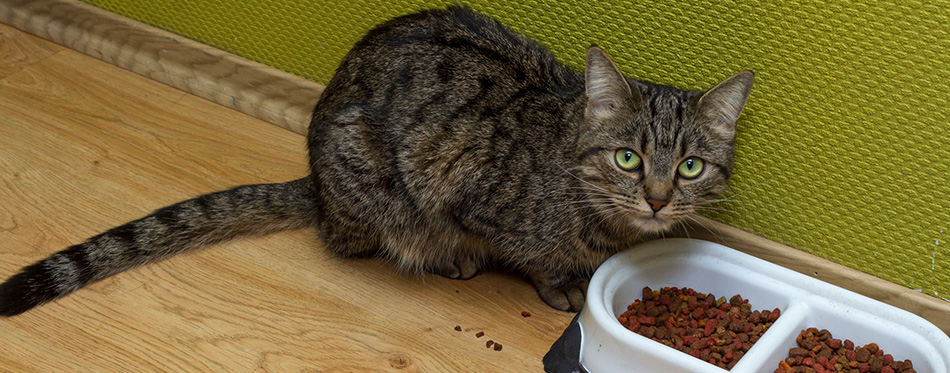We’re going to be brutally honest and state that if you’ve found yourself trawling the internet for articles to find out whether your cat is a picky eater or not, then chances are that they are. However, what you should be asking yourself is whether your feline is turning their nose up at their food because they enjoy being fussy, or if there is another underlying issue at play. Stick with us and learn more about how to tell what signs constitute a picky eater, and what signs don’t.

Why “Pickiness” Isn’t in a Cat’s Programming
Cats are opportunistic feeders. Felines have never been in the habit of eating large meals but rather eat between 10 to 20 meals a day. Put differently, they’ll eat whenever a food source presents itself. Given their evolution from solitary hunters in the wild to domesticated felines, you’d expect felines’ feeding patterns to change. However, similar to how cats as a species have continued to be obligate omnivores over time, their eating preferences have likewise stayed consistent.
What we’re trying to get across here is that having a finickity cat isn’t natural when you consider the species’ evolutionary history. More often than not, cats referred to as “picky” have something blocking their natural feeding behaviors. Put differently, your cat is choosing to be picky because they’ve “learned” this behavior. Now, for your sanity and theirs, it’s time to unlearn it.
What’s the Verdict: Picky Eater or Not?
Situation 1 – Your cat rushes their food for nobody: Although your cat’s relaxed eating pace may perplex you, this doesn’t necessarily mean that your cat is turning their nose up at their food. Similar to many humans, your cat may just savor their food by slowly enjoying every mouthful on offer. Referring back to a cat’s ancestral history, we feel that it’s appropriate to reiterate that cats are “nibblers” – or “opportunists” – by nature. If these very words are being skimmed by a slow eater, surely, you’ll sympathize – it’s stressful enough feeling as though you must rush in a restaurant.
Solution 1 – Rather than make your cat feel like they’re being rushed in their own home, we recommend putting out a daily ration of food several times per day for your cat instead of putting out an entire meal portion. This should allow your cat to eat like they’re naturally programmed to. If you’re feeling adventurous, why not put your cat’s dry kibble in a foraging device? Your cat will be mentally stimulated and receiving all their nutrients simultaneously.
Situation 2 – When dinner is served, your kitty isn’t overly bothered that there’s food in their bowl: Although your friends laugh about how their cats can barely keep still as they’re kibble is being served, why doesn’t your feline seem to be the slightest bit interested?
Solution 2 – This may be to do less with your kitty being fussy and more to do with what family members are around the house during working hours. Could it be that someone else in your household can’t resist giving your cat treats throughout the day? If this is the case, don’t be overly harsh on them. After all, who could possibly resist a kitty’s beseeching eyes?
Situation 3 – Your cat is rapidly losing weight: Your cat is losing body fat at an unprecedented rate because they won’t ingest the food on offer. What can be done?
Solution 3 – Firstly, switch up your cat’s kibble. The crux of the problem may be that your cat isn’t overly enthused about the kibble in their bowl. When you’re swapping one kibble for another, it’s important to do this slowly by mixing the new food in slowly over seven days (for older cats, ten days or more will do the trick).
Secondly, you cat may not be eating because they’re afraid of the new environment that their food bowl has been placed in. That’s right: your picky eater problems could be solved with doing something so incredibly simple like moving the bowl to a new environment. Therefore, when choosing the new food bowl environment, it’s essential to ensure that: the food bowl is in an open space where your cat could not theoretically become trapped by another animal, it’s not near an appliance like a central heating duct or washing machine, and nearby their food and water bowl. If you are looking for more options, check out our guides on water bowls for cats and food bowls for cats.
On a darker note, the least specific and most common sign of illness is a cat not eating. Therefore, if all other techniques to coax your cat into eating fail, this warrants a trip to the vet.

If Your Cat Is Still Being a Fusspot
Treats have got to go – at least for a little while: Although felines are praised for being smart, we don’t give them enough credit for picking up on our behavioral habits to improve their own food situation. You may believe that coaxing your cat into eating with a few treats is working as a reward. However, what this is most likely doing is training your cat into not eating as they know if they feign disinterest, they’ll be able to eat their food and a handful of delicious treats. Therefore, stop giving your cat’s treats until they decide to start eating their designated meal.
Only leave your cat’s food out for a short time period: For at least a while, your cat’s dinner should only be left out for them to eat for approximately half an hour each night. What this approach should foster is an awareness for your kitty that if they don’t lap their meal right out, it may be hours until the next chow arrives into their bowl.
Attempting to solve this problem may send you a bit loopy. However, we promise that it will be worth it when your fussy feline starts to enjoy their food once again!
Source:
- Feeding the Finicky Cat – PetMD

